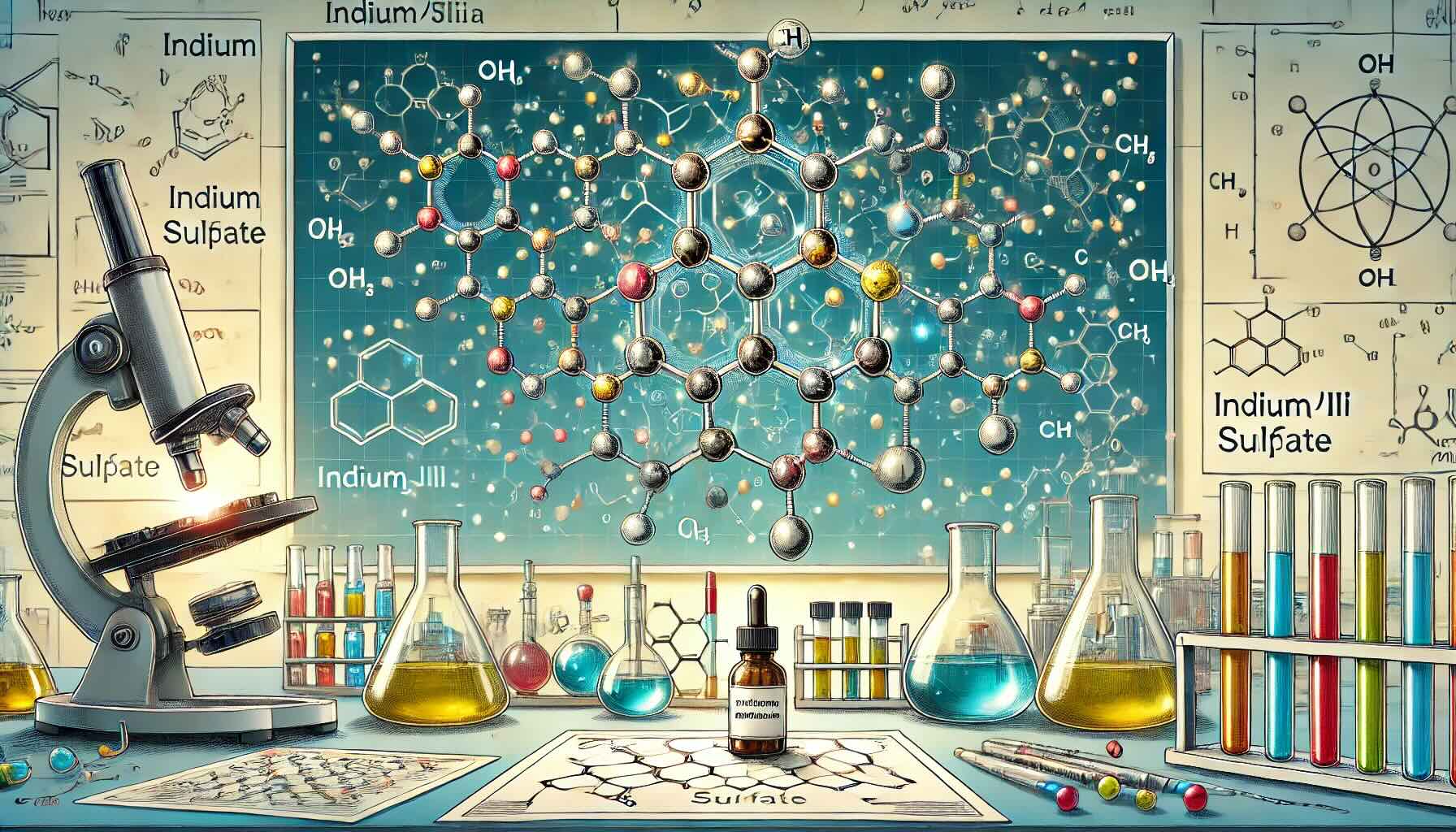
What is Indium(III) Sulfate? Indium(III) Sulfate, a chemical compound with the formula In2(SO4)3, is a fascinating substance used in various industries. This compound is known for its unique properties and applications, making it a valuable material in scientific research and technology. Why should you care? Understanding Indium(III) Sulfate can help you appreciate its role in electronics, optics, and even medicine. What makes it special? Its ability to conduct electricity and its stability under different conditions make it a standout among other compounds. Curious about its uses? From being a catalyst in chemical reactions to its use in semiconductors, Indium(III) Sulfate has a wide range of applications. Ready to learn more? Let's dive into 25 intriguing facts about this versatile compound!
Key Takeaways:
- Indium(III) sulfate, a white crystalline compound, is used in touchscreens, glass manufacturing, and more. It's low in toxicity but requires careful handling and disposal to prevent environmental impact.
- Discovered in 1863, Indium(III) sulfate has evolved from alloys to high-tech applications. Its rarity and recyclability make it a valuable element for future technologies.
What is Indium(III) Sulfate?
Indium(III) sulfate is a chemical compound with the formula In2(SO4)3. It's a white, crystalline substance used in various industrial applications. Let's dive into some fascinating facts about this compound.
Chemical Properties
Understanding the chemical properties of Indium(III) sulfate helps us appreciate its uses and behavior in different environments.
- Formula: The chemical formula for Indium(III) sulfate is In2(SO4)3.
- Molecular Weight: It has a molecular weight of approximately 517.82 g/mol.
- Solubility: Indium(III) sulfate is soluble in water, making it useful in aqueous solutions.
- Appearance: This compound typically appears as a white crystalline powder.
- Melting Point: It decomposes before melting, which is a common trait among many sulfates.
Industrial Uses
Indium(III) sulfate has several applications in different industries due to its unique properties.
- Electronics: Used in the production of indium tin oxide (ITO), a key material for touchscreens and LCDs.
- Catalysts: Acts as a catalyst in organic synthesis, aiding in various chemical reactions.
- Glass Manufacturing: Enhances the properties of special glasses, making them more durable and heat-resistant.
- Semiconductors: Plays a role in the manufacturing of semiconductors, crucial for electronic devices.
- Pigments: Used in pigments for its ability to produce vibrant colors.
Health and Safety
Handling chemicals always comes with risks. Knowing the health and safety aspects of Indium(III) sulfate is essential.
- Toxicity: It is considered to have low toxicity, but caution is still necessary.
- Handling: Always use protective gear, such as gloves and goggles, when handling this compound.
- Storage: Store in a cool, dry place away from incompatible substances like strong acids and bases.
- First Aid: In case of contact with skin or eyes, rinse immediately with plenty of water and seek medical advice if necessary.
- Environmental Impact: Proper disposal is crucial to prevent environmental contamination.
Historical Context
The history of Indium(III) sulfate provides insight into its discovery and development.
- Discovery: Indium was discovered in 1863 by Ferdinand Reich and Hieronymous Theodor Richter.
- Naming: Named after the indigo blue line in its spectrum, which led to the discovery of the element.
- Early Uses: Initially used in the production of low-melting alloys and solders.
- Development: Over time, its applications expanded into electronics and other high-tech industries.
- Research: Ongoing research continues to uncover new uses and properties of this versatile compound.
Fun Facts
Some interesting tidbits about Indium(III) sulfate that might surprise you.
- Rare Element: Indium is one of the rarer elements in the Earth's crust, making its compounds relatively scarce.
- Soft Metal: Indium, the metal, is so soft it can be cut with a knife and leaves a mark on paper.
- Flexible Uses: Its compounds, including Indium(III) sulfate, are used in a wide range of fields from medicine to technology.
- Recycling: Indium is often recycled from electronic waste, highlighting its value and importance.
- Future Potential: With the rise of new technologies, the demand for indium and its compounds is expected to grow.
Indium(III) sulfate is a fascinating compound with diverse applications and intriguing properties. Whether in electronics, glass manufacturing, or as a catalyst, its role in modern industry is significant.
Final Thoughts on Indium(III) Sulfate
Indium(III) sulfate, a compound with intriguing properties, plays a significant role in various industries. From its use in electronics to its applications in research, this substance proves its worth. Understanding its characteristics, such as its solubility in water and its role in creating indium tin oxide, highlights its importance.
Moreover, its unique properties make it valuable in the development of new technologies. Whether you're a student, a researcher, or just curious about chemistry, knowing these facts can broaden your knowledge. Indium(III) sulfate might not be a household name, but its contributions are undeniable.
Keep exploring the world of chemistry, and you'll find many more fascinating compounds like this one. Knowledge is power, and every fact learned brings you closer to understanding the complex world around us.
Frequently Asked Questions
Was this page helpful?
Our commitment to delivering trustworthy and engaging content is at the heart of what we do. Each fact on our site is contributed by real users like you, bringing a wealth of diverse insights and information. To ensure the highest standards of accuracy and reliability, our dedicated editors meticulously review each submission. This process guarantees that the facts we share are not only fascinating but also credible. Trust in our commitment to quality and authenticity as you explore and learn with us.
